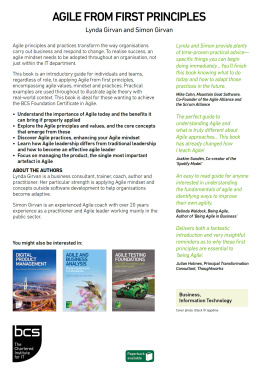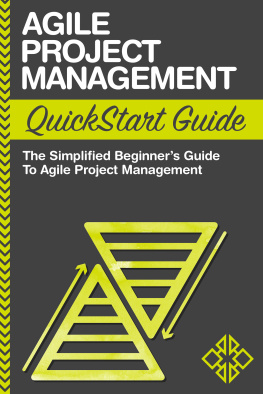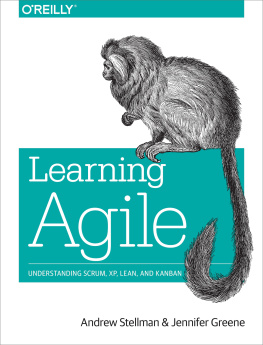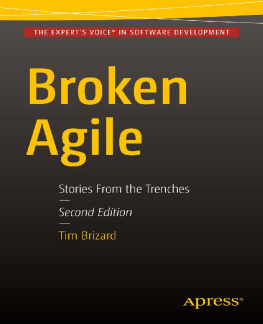






Copyright
2016 Maik Seyfert
All rights reserved. No portion of this book may be reproduced in any form without permission from the publisher. For permissions contact:







Introduction
The motivation to write this book came from my passion for Agile software development, combined with many years of experience. Many Agile projects that Ive worked on were Agile transitions; project members had little or no experience with software development methods. Working with low-maturity teams in Agile software development is quite challenging on the one hand, but brings some advantages, like non-biased mind, on the other hand.
This book is written for both, readers that are new to Agile as well as readers who are experienced with Agile software development. The subject of this book is the core framework and methodology for Agile software development, the Agile Manifesto and its 12 principles. To understand and follow this foundation of Agile software development is essential, because without this understanding of the Agile Manifesto other frameworks, rulesets, and methodologies will not result in an Agile way of working.
The Agile Manifesto and its 12 principles are explained in an easy-to-understand way, with additional, valuable information that any project can profit from.
The book also includes the so-called Agile Values that are not contained in the Agile Manifesto itself. They are, from my point of view, general values that should be applied in daily life as well. Since this book refers to the Agile Values in several chapters, Ill introduce them briefly here. The Agile Values are truth, transparency, trust, respect, and commitment. As mentioned, they are great values to have, not only in Agile software development.
With that short introduction, Ill wish you an enjoyable read through the book! Any feedback is also greatly appreciated, which can be sent directly to:







The Agile Manifesto
Before we enter the 12 Agile principles in detail, we will look at the Agile Manifesto itself. Right now, we will scratch the surface of its history and reveal its content, then dive deeper later in this chapter.
Here, we find the reason why Agile software development exists. Representatives from several disciplines of software development realized that there are better ways of developing software, than it was done previously. Reasons for this might have been that the software didnt deliver the value it should have, or didnt meet clients expectations. In other cases, people might have experienced the work as an obligation without fun, which left them feeling de-motivated. There are many good reason for using Agile software development in projects as the preferred method. Of course, there are projects or undertakings that dont require or justify working Agile, and there are others that might consider using some elements of Agile software development, but not all. We will be looking more closely at when it makes sense to use the Agile system for a project.
That aforementioned group of representatives saw a need to change the way software development was done. Therefore, they got together at a ski resort in Utah, in February 2001. Out of this gathering, the Agile Software Development Manifesto arose. Throughout this book, we will refer to the Agile Software Development Manifesto as the Agile Manifesto.
The Agile Manifesto is an alternative to documentation-intensive and process-focused software development. The Agile Manifesto was then signed by all participants, and many individuals and organizations afterwards, who identify with its principles as a way of developing software.
Now it is time to look at the Agile Software Development Manifesto, which states the following:
We are uncovering better ways of developing software by doing it and helping others do it. Through this work we have come to value:
Individuals and interactions over processes and tools
Working software over comprehensive documentation
Customer collaboration over contract negotiation
Responding to change over following a plan
That is, while there is value in the items on the right, we value the items on the left more.
After this introduction to Agile Software Development and brief historical background, you should have a minimum understanding of the motivation behind it and its intentions.
Further in this chapter, we will look more closely at the Agile Manifesto. We will reveal some thoughts behind it as well as some background and set clarification for how it is applied in software development.





Next page













